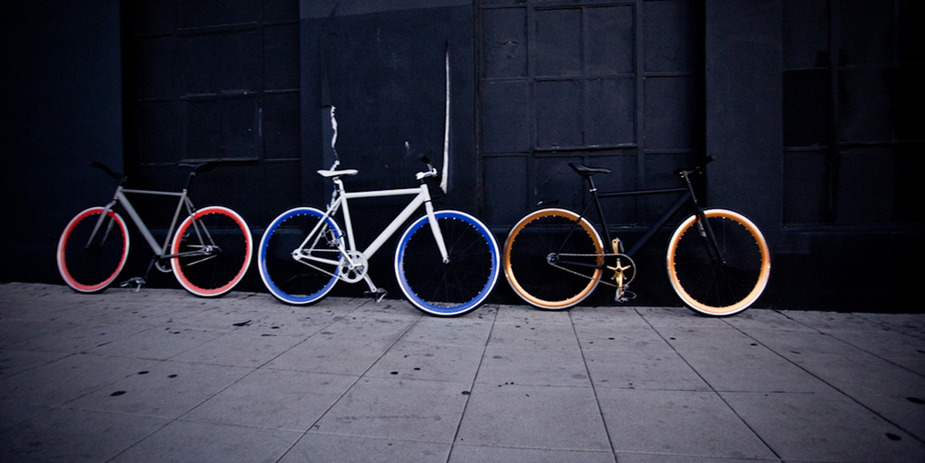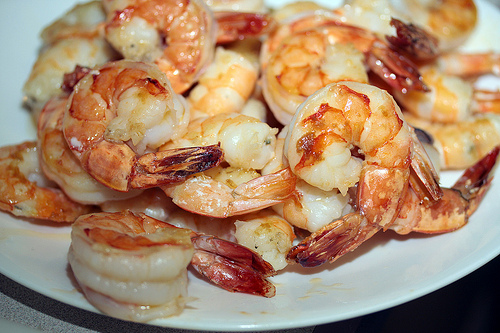 Photo: Solé BicyclesTwo days before New Year’s Eve, Jimmy Standley was in Lake Tahoe getting ready for the inaugural SnowGlobe Music Festival, three days of tunes, parties, after-parties — oh, and he had to sell some bikes, too.
Photo: Solé BicyclesTwo days before New Year’s Eve, Jimmy Standley was in Lake Tahoe getting ready for the inaugural SnowGlobe Music Festival, three days of tunes, parties, after-parties — oh, and he had to sell some bikes, too.
As head of business development for Solé Bicycles, Standley is one part of a five-man team bent on bringing fixed-gear bicycles to the masses. Fixies, as they’re affectionately known, are bicycles at their most basic: frame, wheels, pedals, seat, and handlebars. Whereas most bikes have a “freewheel” system that allows the wheels to spin independently of the pedals, on a fixie, if the bike is moving, your feet are too. This makes for bikes that are simple, lightweight, and low maintenance, although they’re not well suited for tackling hilly terrain Tour de France-style.
“Fixies were big in the ’80s and kind of died out. Now it’s sort of this trendy thing that’s starting to come back,” Standley says.
Indeed. In Seattle, there’s a dude who peddles pies from one. Credit bike messengers in New York City for the resurgence. A fixie’s ideal for shuttling a parcel through traffic-clogged city streets or jetting across campus.
It was the appearance of fixies around the University of Southern California alongside skateboards and beach cruisers that inspired Jake Medwell and Jonathan Shriftman to found Solé Bicycles two years ago, when they were still students. At that time, it was more common to either purchase a custom fixed-gear bike — which could be costly — or rig together your own fixie by stripping down a standard road bike. Over lunch one afternoon, Medwell and Shriftman decided they wanted to build fixies and sell them at prices the typical college student could afford.
A $15,000 grant won through a competition sponsored by Inc. magazine allowed the duo to get the company up and running. They traveled to China to meet with a manufacturer and design the Solé fixie prototype, and placed an initial order for 200 bikes. The first bikes, which they sold for $200 apiece, quickly evaporated. (Note to readers: We originally stated that the bikes sold for $80 each. That is what it cost to manufacture them. Apologies for the error.)
Today, Solé sells out an 850-bicycle order each business quarter. Medwell, Shriftman, and three new employees, including Standley, have shipped bikes to every state. They have distributors in Mexico and Puerto Rico, and are working to get Solé into the British isles too.
Although they haven’t deviated much from the original concept, a Solé will now cost you $349. Standley says that the price is still something “college kids can afford,” which is the main reason Solé builds the cycles overseas; the company now uses a Taiwan-based manufacturer, Headline Development — the same company that produces Huffy bikes. “There isn’t really anywhere in the U.S. where you can make ’em that cheap,” Standley says.
You can get a fixie cheaper. A quick search on the Interwebs turns up a Schwinn single-speed bike for $190, as well as another company started up by a pack of 20-something entrepreneurs, Pure Fix Cycles, whose bikes start at $325. But Standley stands by his product. “Our frame — everything — is different from other fixies,” he says. Solé frames are composed of hi-tensile steel, and the entire thing is TIG-welded. A Solé weighs just 26 pounds, where a similar Schwinn comes in at 41 pounds. Solé riders also have the option of adding freewheel, turning their fixies into single-speed cycles.
So far, the formula seems to be working. Solé is now exploring doing pop-up shows in New York City, Chicago, and Austin. Street artist Gregory Siff featured the bikes in a gallery show in Beverly Hills. A “flash sale” on Gilt.com had 100 Solé fixies sold in 14 minutes; another on Fab.com sold 100 fixies in seven minutes. Even Whoopi Goldberg rides a Solé fixie. (Eat it, GM.)
But ultimately, it’s not the cool kids that Solé is targeting. “We’re not really focusing on the trendier crowd that would traditionally ride a fixie,” Standley says. “We’re trying to put our bikes in the hands of people who wouldn’t normally buy a fixie: college kids [and] high school kids.”
Perhaps, ultimately, that’s the real appeal of Solé’s product: taking something that used to be hipster trendy and converting it into something accessible to the masses. Whatever it is, the bikes seem to sell themselves, says 21-year-old marketing chief Ben Petraglia. Sales have been driven by word-of-mouth and through online brands like Fab.com and Gilt.
And anyway, the guys have bigger things to think about on this late December day — like three days of moshing in 20-degree temperatures. “We’re gonna party in Tahoe,” Standley says. “It’s gonna be awesome.”




